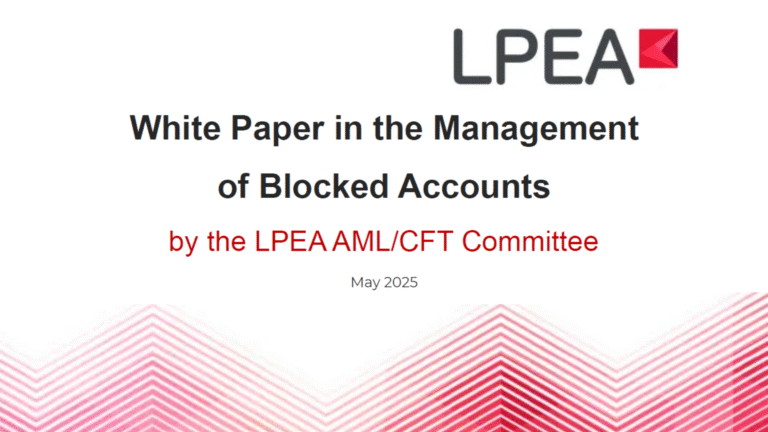By Pacscal Bouvier, Managing Partner & Co-Founder at MiddleGame Ventures
The future of financial services will be dramatically different. Yes, FinTech startups have been trumpeting that mantra for more than a decade. However, their views were misplaced and premature. Their solutions were evolutionary rather than revolutionary. We are currently experiencing a momentous change in Financial Services. The way in which we, as customers, service providers and investors, engage with and participate in the industry will be fundamentally different than before. Viewed through the lens of our fund’s differentiated, thesis-driven, approach we can view these market oscillations as a series of waves, overlapping and building on one another, culminating in a seismic re-architecting of Financial Services.
Our thesis at MiddleGame Ventures consists of three core movements or waves of innovation:
FinTech 1.0: Attacking the front-end
The first wave of FinTech (FinTech 1.0) used digitization tools and superior user experiences (UX/UI) to convert end users to newer, sleeker consumer driven services. Customers and end users were unburdened of the previously manual and inefficient customer touch points and could begin to engage with reduced levels of friction. The digitization of the front-end ocurred across all core verticals. For example, Wise (formerly TransferWise) provided retail and business customers with the ability to send money internationally with a few simple clicks (and at an extremely low cost), rather than making the trek to a physical bank branch to request the movement of funds. Challenger banks such as Revolut and Monzo created an experience of delight and ease by enabling users to open a bank account in seconds, scrap physical cards and minimize foreign exchange fees. We also saw Robinhood disrupt the capital markets and asset management space by creating a digital-native trading experience with zero cost trades and no minimum balance required, subsequently bringing investing to the masses and created a new ‘investing from the couch’ market.
FinTech 1.0 can be summarised as the rise of start-ups focusing on solving for the customer experience (front-end) which ushered in the age of the digital experience for the masses. Frankly, incumbents did little to react to this first wave because the competition was relatively benign, playing at the fringes of customer journeys and augmenting products and services already in existence across the financial services landscape. This first wave is maturing but still incomplete.
FinTech 2.0: Attacking the middleware
We define the second wave of FinTech (FinTech 2.0) as the professionalisation of application programming interfaces (APIs) which let products and services talk to one another in real-time, leading to the rise of embedded finance. Spearheaded by Jeff Bezoz’s noteworthy memo mandating the use of APIs across Amazon’s business, cloud services, API platforms, and machine learning tools began to be leveraged to attack the middle layer of the financial services tech stack. As a result, we witnessed the systemic ‘opening up’ of previously siloed activities and processes, giving rise to the concepts of Open Banking and embedding finance within previously non-financial functions or industry verticals.
In other words, financial sector incumbents could use these tools to add new products and services quickly, and non-financial service players could offer financial products to their customers for the first time. These “Anything-as-a-Service” models are now flourishing across the globe. For example, PayPal enabled embedded one-click purchases at the checkout of partnering merchants by using APIs to send purchase requests specifying the amount owed and other required details. Once completed, the API sends the confirmation of a successful payment back to the merchant application. Other examples include Railsbank and Solaris, which provide the infrastructure rails for financial services and non-financial services companies to build and launch financial services product at speed. While DriveWealth delivered digital brokerage infrastructure, enabling any business to become a marketplace, and let customers trade anything, anywhere. Meanwhile, incumbents began to partner with start-ups in meaningful ways to optimize for embedded efficiencies, but their core business models were not necessarily threatened. Much activity remains within this second wave, yet the maturity of cloud infrastructure and APIs mean cutting edge fintech innovation has moved on.
The convergence of FinTech 3.0 and Web 3.0: Re-architecting the core
Fueled by the momentum of the first two waves, the third wave of FinTech (FinTech 3.0) is where we find ourselves today.
The third wave of FinTech (FinTech 3.0), built upon the first two waves of digitization, smart automation, “platformization” and disintermediation is nurturing a critical new surge of innovation. This new innovation is driven by the increasing application of artificial intelligence (AI) leading to the rise and proliferation of intelligent and autonomous processes. This third wave also zeroes in on core systems in a manner in which the first two waves did not.
However, FinTech 3.0 does not exist within a structural vacuum. Outside and in parallel with the evolution of FinTech described to date, broader secular forces have been at work developing and advancing the way we receive, share, understand, consume, and apply data; otherwise known as the evolution of the Web. Web 1.0 enabled users to share information globally in a truly digital format for the first time, albeit in a predominately static format, democratizing access to information. Web 2.0 represents the rise of online interaction and communication where many users produce and consume content, giving rise to social networks such as Facebook and Twitter. Finally, Web 3.0, which is still gaining traction, represents the shift towards connecting data in a more decentralized way where computers and technologies can intelligently interpret information to generate useful and relevant insights and outputs. Powered by distributed ledger technology (DLT)data can now be connected and shared in a truly decentralized way through blockchain and other applications, paving the way for the potential rise of a less siloed and Balkanized internet. The advent of decentralized finance (DeFi) and the rise of crypto assets and crypto currencies should be interpreted as financial services experimentation within the Web 3.0 movement.
The convergence of FinTech 3.0 and Web 3.0 has the potential to fundamentally change existing market structures. At MiddleGame, we believe this intersection of market forces is profoundly different, not only because it gives rise to new trends, but namely because it signals a fundamental re-architecting of the core to the global economy. As investors, we have witnessed the first two waves of FinTech build over the past decade, while the first wave begins to crest. We have reviewed over 10,000 FinTech startups and have invested in over 40, including 5 unicorns. Given the moment, it would be an understatement to say that we are witnessing a pivotal sea change in the quality of FinTech startups and their market ambitions. We are now seeing the top FinTech entrepreneurial teams around the world gravitating to Web 3.0 and decentralized finance. Existing incumbent business models, processes, and systems are now directly in the line of fire.
FinTech-centered Web 3.0 will bring a tsunami of change. The future of financial services will be radically different than the world we know today, creating a sea of opportunity in its wake. And with it we will see the control of financial services shift from centralized entities, such as banks, to a decentralized model significant for the size of the sum of its parts. Each and every process across the end-to-end financial services value chain (banking, insurance, capital markets, asset management, lending) will be done differently by different actors. It will be more transparent and more democratized. There will be a systematic removal of the need for a ‘middleman’ or financial intermediaries to perform activities. For example, new digital asset classes such as crypto currencies are well positioned to replace fiat as a store of value and medium of exchange. Blockchain-based applications are capable of replacing core banking systems, enabling faster and more transparent transactions, increased levels of security and an immutable account of everything that has happened previously. Yes, the world of FinTech-centered Web 3.0 is still in its infancy, with non-fungible tokens (NFTs) taking the initial form of digital art, music, and collectables. However, the community and mission behind the movement emulates the core thesis of this third wave: transparency, decentralization, and automation.
It is at this intersection between FinTech 3.0 and Web 3.0 that MiddleGame is strategically positioned to maximize each new opportunity. Our pipeline of opportunities is of the highest quality since we began in FinTech in 2012. The combination of the talent migration leading FinTech 3.0, plus cutting-edge technologies aiming for the core of financial serves will result in profound changes in market structures and behavior. Banking, capital markets, lending, asset management, insurance will all be impacted directly by this convergence of FinTech 3.0 and Web 3.0. Technological immaturity and regulatory complexity have protected incumbents in the past but those dual “protective moats” are drying up. If one is skeptical of this prognosis, look no further than retail, entertainment, or even the taxi industries for examples of core market structure change driven by technology. The third wave of FinTech, bolstered by Web 3.0, paves the way for the fundamental re-architecting of the financial services industry. FinTech-centered Web 3.0 is eating the core of Financial Services.
At MiddleGame Ventures, we are looking for (and finding) these unique start-ups that are harnessing the third wave of FinTech and Web 3.0 to change financial services. If you are a service provider (fund administration, accounting, banking, custody, asset management and capital markets), your business will be impacted. If you are an investor or asset manager interested in the space, we suggest that you “lean in” to the future.
As 2022 begins, MGV will be participating in and/or hosting various events that delve into these topics. We look forward to seeing you and engaging with you and your team in the new year.
Read more on MiddleGame’s views regarding the transition to a FinTech centered Web 3.0 here.





